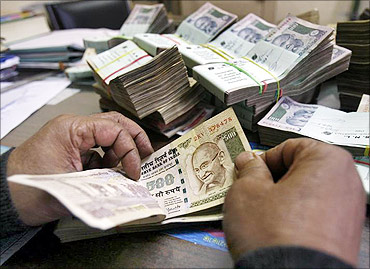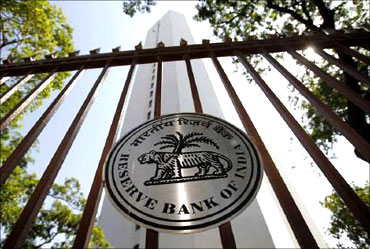 | « Back to article | Print this article |
India sees sharp decline in FDI
In the process, India's global ranking as a destination for FDI fell from eight to 14, according to the World Investment Report, 2011.
During the corresponding period, inflows into the United States, the world's top FDI recipient, increased from $153 billion to $225 billion, while the numbers for China were $95 billion and $105 billion, respectively.
Several other countries like Belgium ($62 billion), Brazil ($48 billion) and Germany ($46 billion) attracted significantly more FDI than India did during the year. What accounts for the fall in FDI to India?
There is no clear-cut answer. On the various predictors of FDI identified empirically, India fares well on market size (measured by GDP) and potential for market expansion (GDP growth rate).
Click NEXT to read more...
India sees sharp decline in FDI
Government indecision, especially in the Cairn-Vedanta imbroglio and the delay in clearing the RIL-BP deal, has not helped matters.
The exasperating policy paralysis that is delaying much-needed reforms is turning foreign investors off, and they have no dearth of options. All said and done, India has seriously under-served itself as a destination for FDI.
Much of the FDI of $36 billion during 2010 was directed to the real estate sector, with comparatively little going into manufacturing or services.
However, if long-term trends are considered, a subtle shift in the nature of FDI has been occurring since the early noughties.
Click NEXT to read more...
India sees sharp decline in FDI
India's emergence as an auto hub of some consequence lately is due in no small measure to investments by foreign MNCs such as Peugeot, Hyundai and Nissan.
Ford Motor Company's decision to set up a $1-billion plant in Gujarat is but the latest development in a process long underway.
The market seeking FDI can be safely expected to increase as the economy grows. The decision by global power equipment majors to set up production bases in India to meet domestic demand is a case in point.
Click NEXT to read more...
India sees sharp decline in FDI
Policy stability, transparency and predictability, devoid of flip-flops, can ensure that there is no undulation in inflows.
In the process, India must ensure that its own interests are safeguarded. The much-touted "package of benefits" that FDI purportedly brings with it does not accrue automatically to the host country. For example, for technology transfer from MNCs to be effectively diffused, a host country's National Innovation System needs to be primed to absorb these transfers.
A race-to-the-bottom where individual states outdo each other to attract international investors would be self-defeating.
India has much to offer the foreign investor. It must ensure the benefits also flow the other way around.




